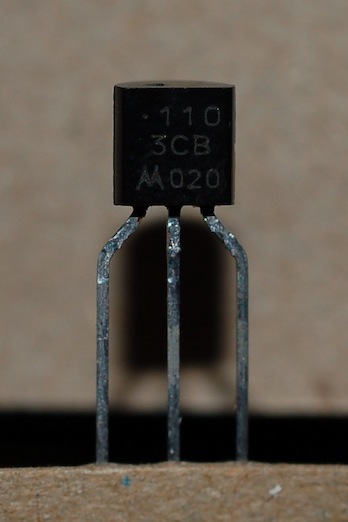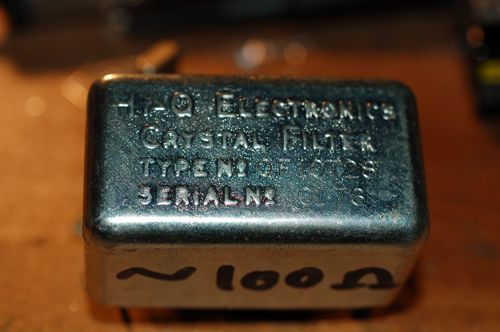PNP-80
PNP-80 - An 80m band receiver using only PNP transistors
Original date : August 2010

The idea for this project came when I bought 200 unknown transistors for £1 at a radio rally a few years ago. On getting them home I discovered they were PNP and measured a gain of about 250. I thought it might be fun to build a radio using just these, then put them away and forgot all about it for two years. They have a Motorola logo and part number, but no datasheet I’ve found seems to match these parts. Barring more information, I’ve decided to use these parts as essentially plastic cased PNP BC108 companions. The 80m band is pretty active at any time and the low frequency requires very little from components in a receiver, this is especially suited when you know almost nothing about the parts you’ve set out to build with.
Audio Amp
If you build a radio backwards, starting at the audio end and working back towards the antenna, then even if nothing else works, you should at least have a working audio amplifier; and many of the other radio stages can be tested by listening to the output and tuning for maximum noise. The design I went with is a bog-standard transformer coupled Class-B amplifier, with a bit of biasing on the base of the push-pull pair to reduce cross-over distortion. The biasing comes about from the voltage divider formed from R2 and Q3 acting acting as a diode, this puts about 0.7v on the bases of Q1 and Q2. L2 is an LT44 L1 is an LT700


VFO & Buffer
The first attempt at a VFO was a Vackar type design, with which I had only minor success (it briefly oscillated once). Alan Yates offered up this [design](http://www.vk2zay.net/article/file/1187). I changed the buffer for a two transistor job and replaced the coupling capacitors with trimmers to enable signal purity and level adjustments. Output is about 1v peak to peak into 50 Ohms. I also later added a low pass filter (cut off at ~10 MHz) to clean up the output a bit more. Now the second and third harmonics are at about -40 and -45db.


Bandpass filter
A 50Ω in and out bandpass filter built from the [GQRP Club design info](http://www.gqrp.com/technical1.htm) keeps large out of band signals out of the mixer.


Mixer
The mixer is just a simple bipolar transistor mixer, nothing fancy. It requires only low signal levels from the local oscillator, and will be swamped by large signals on the RF port. This type of mixer also offers 10 dB+ of conversion gain; how well it performs will depend on the specifications of the transistor (unknown in this case).


Crystal Filter and Carrier Insertion Oscillator
A hunt through the junk box turned up this 10.7 MHz SSB crystal filter and documentation. It requires a 10.70165 MHz carrier insertion crystal for LSB; another hunt through the junk produced a 10.8 MHz crystal and an old Pye Westminster crystal oscillator board. The BC108 on the oscillator board was replaced with one of the PNP transistors and the crystal was swapped. A bit of inductance added in series with the crystal brought the frequency down to 10.702MHz - close enough for the moment.


Product Detector
A product detector is basically a mixer - a three port device. Two of the ports are Radio Frequency inputs, and the third is an output consisting of recovered audio, higher harmonics of the audio frequencies and various radio frequencies and harmonics. The RF in the output is filtered out and the higher audio harmonics are (usually) beyond the range of human hearing anyway. A brief search of the common literature provided no guide to designing a product detector using only bipolar transistors, so I cheated and “borrowed” the design from [the Funster 40m project](http://www.qrp.pops.net/funster.asp). A couple of alterations were made to suit components on hand and the lower voltage (8V vs 13.8V).


Update 2022
Progress on this project petered out when the spectrum analyser I was using to test the modules failed. The spectrum analyser was especially useful when building and integrating the VFO, crystal filter and CIO and the product detector.
The boards are still sitting around waiting for a revisit. I now have a TinySA spectrum analyser, so I may get back this project eventually.
